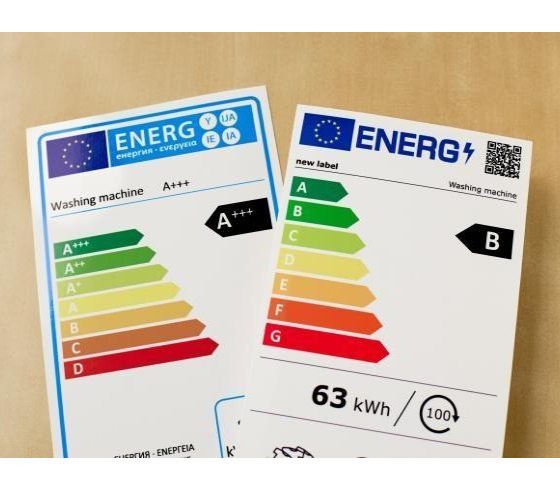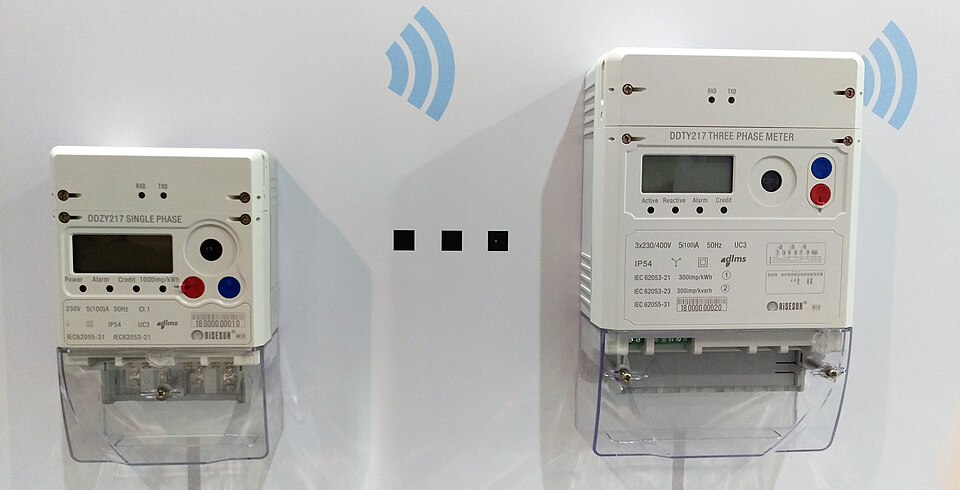OCR Specification focus:
‘Understand motivations for energy-saving devices and informed appliance choices.’
Modern electrical devices must balance efficiency, cost, and environmental impact. Understanding how energy usage affects consumers and the planet encourages smarter, sustainable choices in technology and daily life.
Environmental and Consumer Context in Electrical Power
Energy consumption is one of the major environmental concerns of modern society. The production, transmission, and use of electrical energy contribute significantly to carbon emissions, resource depletion, and global warming. As a result, both governments and manufacturers have prioritised the development of energy-efficient technologies and have encouraged consumers to adopt sustainable energy practices.
Environmental Impact of Energy Use
Electricity generation often relies on fossil fuels, such as coal, oil, and natural gas, which release carbon dioxide (CO₂) and other greenhouse gases into the atmosphere. These emissions contribute to the enhanced greenhouse effect, leading to rising global temperatures and environmental instability. Reducing the energy demand of electrical appliances can therefore reduce total emissions.
Key environmental consequences of high energy use include:
Climate change due to increased greenhouse gas concentrations.
Air pollution from combustion processes in power stations.
Depletion of natural resources, especially non-renewable fuels.
Habitat loss and environmental damage linked to fuel extraction.
The shift towards renewable energy sources—such as solar, wind, and hydroelectric power—reduces emissions but still relies on consumers and manufacturers to manage energy responsibly.
Energy Efficiency and Device Design
Energy efficiency refers to how effectively an electrical device converts electrical energy into useful output energy. The less energy wasted as heat or sound, the more efficient the device. Efficiency is an essential concept in environmental physics because even small percentage improvements across millions of devices can lead to major reductions in total power demand.
Efficiency: The ratio of useful output energy (or power) to total input energy (or power), often expressed as a percentage.
EQUATION
—-----------------------------------------------------------------
Efficiency (η) = (Useful Output Energy or Power ÷ Total Input Energy or Power) × 100%
η = Efficiency (no unit, expressed as %)
—-----------------------------------------------------------------
In practical terms, an energy-efficient appliance provides the same function while consuming less electricity. For instance, LED lighting replaces incandescent bulbs, offering similar brightness but requiring only a fraction of the power.
Technological Developments in Energy Efficiency
Over recent decades, several innovations have transformed the energy profile of domestic and industrial appliances:
LED and OLED lighting: Produce minimal heat loss and consume up to 90% less power than traditional bulbs.
High-efficiency motors: Used in appliances like washing machines and refrigerators to reduce energy waste from friction and resistance.
Inverter technology: In devices such as air conditioners, variable power control minimises wasted energy during operation.
Smart home systems: Automated control of heating, lighting, and appliance use reduces unnecessary energy expenditure.
These technologies are complemented by the growing use of renewable energy integration, where consumers can generate their own power through solar panels or micro wind turbines, reducing dependence on centralised fossil-fuel-based grids.
Consumer Awareness and Appliance Labelling
In the United Kingdom and across the European Union, consumers are guided by energy efficiency labelling schemes.

EU energy label for appliances, scaled A (most efficient) to G (least efficient), with fields for energy consumption and other parameters (e.g. noise or water use). The standardised format enables quick, like-for-like comparisons and underpins informed consumer choices. This diagram includes label elements (QR to EPREL, class arrow) that support transparency for buyers. Source.
The A–G rating scale allows users to compare the performance of appliances quickly and make informed purchasing decisions.
Labels typically include:
Annual energy consumption in kilowatt-hours (kWh).
Efficiency rating (A for most efficient, G for least efficient).
Performance metrics, such as water use or noise level.
By selecting A-rated appliances, consumers reduce both household energy bills and environmental footprint.
Economic and Social Motivations for Energy Saving
Beyond environmental concerns, efficiency also carries strong economic incentives. Reducing electricity consumption lowers household and industrial energy costs, which can be substantial over long periods.
The cost of energy is calculated from consumption and tariff rate:

A domestic smart meter displaying electricity consumption. Such devices provide live and cumulative kWh readings that help households adjust behaviour and verify energy-saving measures, directly informing bill management and appliance choices. (The photograph includes model-specific interface details not required by the syllabus.) Source.
EQUATION
—-----------------------------------------------------------------
Energy Cost (£) = Energy Used (kWh) × Cost per kWh (£)
Energy Used (kWh) = Electrical energy consumed over time.
Cost per kWh (£) = Price charged by the energy supplier per unit of energy.
—-----------------------------------------------------------------
Rising global energy prices have further motivated consumers to adopt efficient technologies, leading to demand for sustainable innovation across the electronics and engineering industries. Governments support this shift with tax incentives, subsidies, and public awareness campaigns promoting energy conservation.
Environmental Policies and Sustainability Goals
National and international policies encourage reduced energy consumption through:
Efficiency standards for appliances and vehicles.
Renewable energy targets set by agreements such as the Paris Accord.
Carbon taxation and cap-and-trade systems that financially penalise high emissions.
Research funding for green technologies and materials.
These initiatives reflect a wider goal of achieving net-zero emissions, where the amount of greenhouse gas released equals the amount removed from the atmosphere.
Sustainable Consumer Behaviour
Consumers play an essential role in the environmental context of energy use. Even without new technologies, changes in behaviour can substantially reduce energy demand:
Switching off devices rather than leaving them on standby.
Using energy-saving modes on computers and appliances.
Running full loads in washing machines and dishwashers.
Insulating homes to reduce heating and cooling energy losses.
Choosing renewable electricity tariffs from energy providers.
Awareness of these behaviours has increased through environmental education, labelling campaigns, and online energy-saving tools.
The Broader Environmental Connection
Every watt of power saved contributes to reduced strain on power generation systems and lower emissions overall. Therefore, understanding the relationship between electrical power, efficiency, and environmental responsibility is a crucial aspect of modern physics education. It connects core circuit principles—such as power (P = VI) and energy transfer (W = VIt)—to real-world applications in sustainability, economics, and public policy.
Through efficient technologies and informed consumer choices, society can reduce its environmental footprint, manage finite resources responsibly, and ensure that future energy use supports both human progress and planetary health.
FAQ
Smart appliances use sensors, timers, and connectivity to optimise when and how energy is used. For example, they can automatically delay operation until off-peak hours or when renewable energy supply is high.
Some systems also link with smart meters or home energy management apps, providing real-time feedback and suggestions to reduce unnecessary consumption. Over time, these adaptive features can cut energy usage without affecting comfort or convenience.
High-efficiency models often use advanced components such as inverter motors, improved insulation, or sophisticated control circuits, which increase production costs.
However, the total cost of ownership is usually lower due to reduced electricity consumption over time. Governments sometimes offer rebates or incentives to offset the higher initial purchase price, encouraging consumers to invest in long-term sustainability.
Barriers include:
High upfront costs despite long-term savings.
Lack of awareness about efficiency benefits or labelling schemes.
Compatibility issues in older buildings lacking modern electrical infrastructure.
Behavioural resistance, as some consumers prioritise convenience or aesthetics over energy performance.
Education, subsidies, and stricter energy standards can help overcome these limitations.
If electricity is mainly produced from renewable sources, the environmental gain from improved efficiency is smaller per unit of energy saved, as generation already produces low emissions.
However, in countries still reliant on fossil fuels, efficiency improvements significantly cut carbon output. This means that while efficiency always saves energy and cost, its environmental impact depends on how the electricity is generated.
Yes. When aggregated across millions of households, even small reductions—like switching to LED lighting or unplugging chargers—can substantially reduce total national demand.
Lower demand means fewer peak loads on power stations, reduced fuel consumption, and less strain on energy infrastructure.
Collective behavioural change remains one of the most cost-effective tools for achieving sustainability targets.
Practice Questions
Question 1 (2 marks)
Explain why improving the energy efficiency of household electrical appliances benefits both consumers and the environment.
Mark scheme:
1 mark: States that higher efficiency means less electrical energy is wasted (e.g. as heat).
1 mark: States that reduced energy consumption lowers electricity bills and decreases the demand for energy generation, reducing carbon emissions or environmental impact.
Question 2 (5 marks)
Domestic electricity use is a major source of energy demand. Discuss how consumer awareness, appliance labelling, and government policy contribute to reducing the environmental impact of electricity consumption.
In your answer, you should refer to specific examples of efficiency measures or behavioural changes.
Mark scheme:
1 mark: Mentions energy efficiency labels (e.g. A–G rating) helping consumers make informed choices.
1 mark: Explains that consumers can reduce energy use through behavioural changes (e.g. switching off standby devices, using energy-saving modes).
1 mark: Describes how government policies (e.g. efficiency standards, renewable energy incentives) encourage lower energy consumption.
1 mark: Links these actions to reduced greenhouse gas emissions or environmental protection.
1 mark: Provides at least one relevant example of an efficiency measure or appliance (e.g. LED lighting, smart meters, inverter technology).

